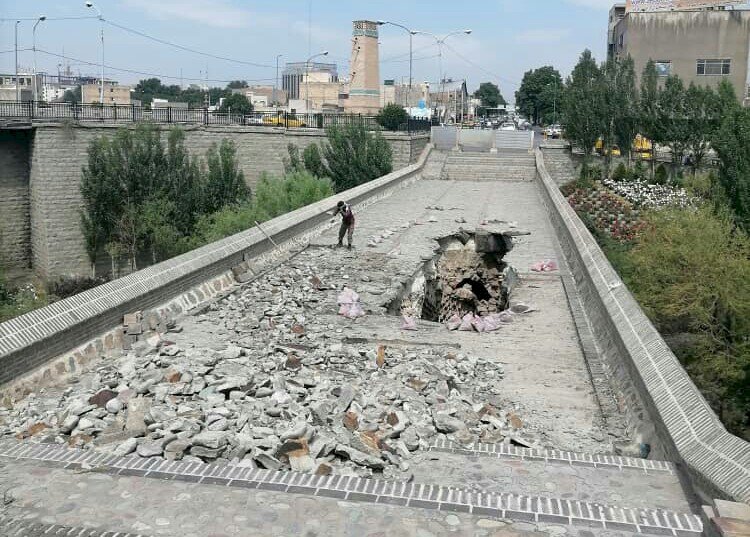Seljuk-era arch bridge near Tehran undergoes restoration

TEHRAN –The first phase of a restoration project and rehabilitation work has been commenced on Pol-e Khatun; a centuries-old arch bridge near capital Tehran.
The deck of the monument, which is situated in Karaj, the capital of Alborz province, was slightly collapsed last December due to severe rainfalls.
The project involves lightening the bridge and preparing it for the next rounds of restoration works, the provincial tourism chief Fereydoun Mohammadi announced on Friday.
Days after the collapse, the monument taped the Cultural Heritage, Tourism and Handicrafts Minister Ali-Asghar Mounesan for a personal inspection to the province, some 30 km from Tehran in a westward direction. Visiting the bridge, the minister stressed the need to speed up emergency protection operations to prevent further destruction of the Khatun [“Girl”] Bridge and to provide the necessary conditions for the reconstruction and restoration of this historical monument.
“Emergency protection operations, proper coverage, and installation of warning signs should be carried out as soon as possible to save the lives of citizens… and a suitable space should be created to prevent further destruction of the bridge.”
This is a brick bridge, and despite proper and continuous maintenance, some part of it has collapsed and most of it is still standing, he added.
The foundation of the bridge was constructed during the Seljuk era (1037–1194) while its other sections were thoroughly renovated in the time of Safavids (1501–1736). Arch bridges have been built since ancient times due to the easy accessibility of stone masonry, which is an appropriate material for sustaining compressive forces.
An arch bridge carries loads primarily by compression, which exerts on the foundation both vertical and horizontal forces. Arch foundations must therefore prevent both vertical settling and horizontal sliding. Despite the more complicated foundation design, the structure itself normally requires less material than a beam bridge of the same span.
Arch bridges can be classified into deck arch bridges (featuring arches below the deck) and through arch bridges (those with arches above the deck, generally tied arches). In all arch bridges, the structural difficulty can be found in the minimization of the misalignment of the arch axis and the line of thrust, as well as a sufficient bending and buckling resistance. General design recommendations focus principally on the arch-to-span ratio, the arch and deck slenderness, and the number of hangers or piers.
Recent innovative arch bridges include high-speed railway (HSR) bridges, concrete-filled steel tubular and precast concrete arches, high-performance concrete or ultra-high performance concrete arches, and steel-concrete composite arches, and feature innovative erection methods. Recent research has been dedicated to the shape and magnitude of equivalent geometric imperfections, fatigue detailing, erection methods, reduction of the arch's self-weight, and new materials for arches, hangers, and ties.
ABU/AFM

Leave a Comment